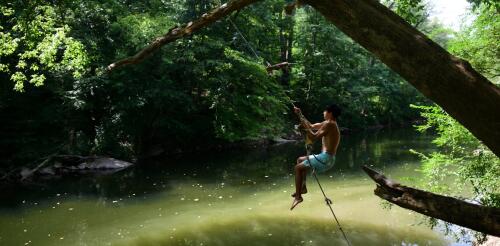carbon sink
Spanning 2,000 acres with more than 50 miles of trails, Wissahickon Valley Park in northwest Philadelphia offers a variety of recreational opportunities, from hiking and biking to bird watching and picnicking. We are a professor of history who co-authored a book on the Wissahickon Valley and an assistant professor of biology. We teach students at Chestnut Hill College, which sits directly across the street from this lush urban park, about the environmental history of the Wissahickon forest and the importance of preserving its biodiversity. We’re also developing a documentary on the Wissahickon funded by the Sisters of Saint Joseph. We want our students – and all Philadelphians – to understand the importance of protecting this urban ecosystem as a way to build climate resilience. Like many of the country’s other great urban parks – from Central Park in New York or Rock Creek Park in Washington to the smaller Phalen Park in St. Paul, Minnesota R...
Several decades ago, when the concentration of carbon dioxide (CO2) in the atmosphere was well below 400 parts per million, climate scientists began warning of the negative consequences for Earth’s climate of burning fossil fuels. From those early warnings, a consensus emerged that carbon emissions would need to be lowered (and eventually zeroed out) to avoid dangerous consequences of global warming such as extreme heat, stronger storms, and more intense floods and droughts. Today the atmospheric CO2 concentration is well over 400 parts per million and still rising, and a plethora of research and recent severe weather events point to the fact that these dangerous consequences are already happening. Governments have set ambitious goals to curb emissions, and some progress is being made, but serious questions and concerns about the slow pace of this progress abound. For each approach to carbon dioxide removal, questions rema...

